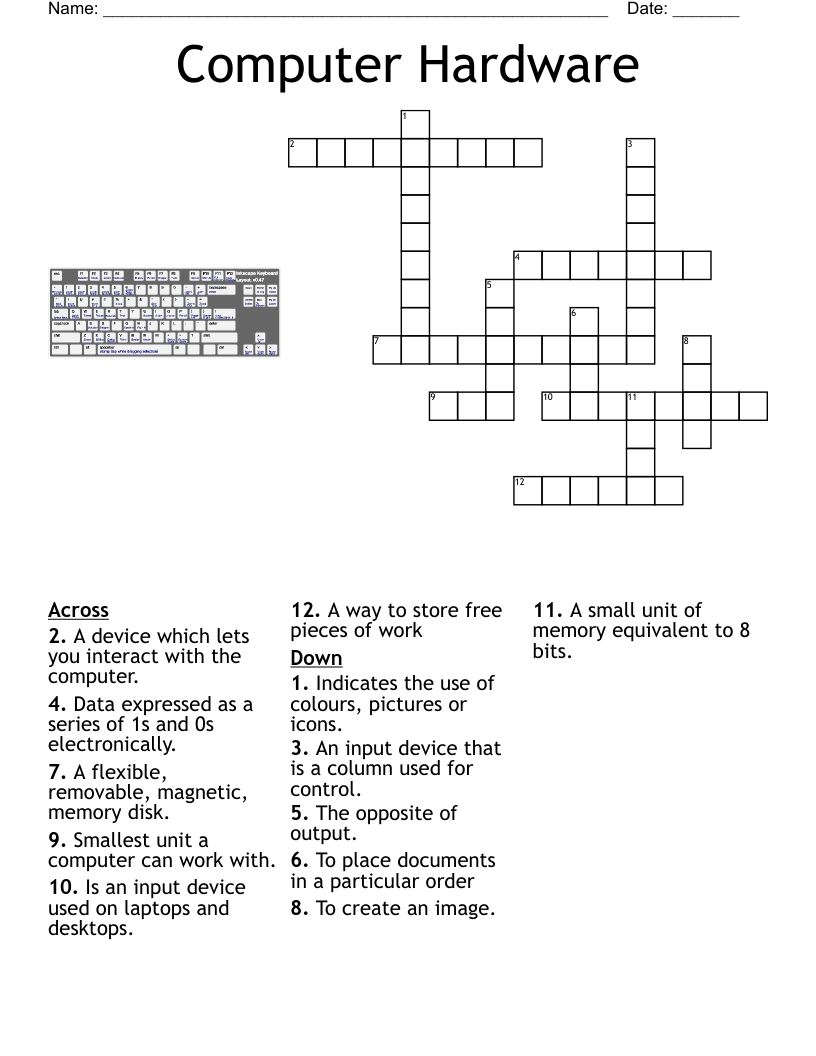“`html
Early PC graphics: A Crossword Clue and a Journey Through Time
The world of personal computing has witnessed a dramatic evolution in graphics capabilities. From the rudimentary displays of early systems to the photorealistic rendering of modern games, the journey has been nothing short of remarkable. A seemingly simple crossword clue, “early PC graphics,” can unlock a treasure trove of information about this fascinating history. Let’s delve into the past and explore the key milestones that have shaped the visual experience on our computers.
The Dawn of Monochrome: MDA and Hercules
In the nascent stages of personal computing, graphics were far from the immersive experiences we enjoy today. The earliest IBM PCs, introduced in the early 1980s, featured the Monochrome Display Adapter (MDA). This card offered a text-based display, capable of rendering characters in a single color, typically green or amber, against a dark background. Graphics were limited to crude representations using ASCII characters, a far cry from the smooth images we are accustomed to. The MDA was primarily designed for business applications, where clear and legible text was paramount.
Around the same time, the Hercules Graphics Card emerged as a popular alternative. While still monochrome, Hercules introduced a significant improvement: the ability to display graphics with a resolution of 720×348 pixels. This allowed for more detailed images and paved the way for early graphical applications. The Hercules card became a favorite among spreadsheet users and those who needed a bit more visual flair than the MDA could offer.
Entering the World of Color: CGA

The introduction of the Color Graphics Adapter (CGA) marked a turning point in PC graphics. Finally, users could experience their computers in vibrant hues. CGA offered a palette of 16 colors, although only four could be displayed simultaneously at a usable resolution. The standard resolution for graphics was 320×200 pixels, which, while a step up from monochrome, still resulted in blocky and pixelated images. Despite its limitations, CGA opened up new possibilities for games and other visual applications. Think of early classics like “King’s Quest” or “Space Quest” – their blocky charm was pure CGA. However, the “color bleed” issue, where colors would blur at the edges, was a common complaint.
Enhanced Graphics: EGA and the Rise of VGA
As technology advanced, so did the demand for better graphics. The Enhanced Graphics Adapter (EGA) was introduced, offering a significant improvement over CGA. EGA provided a larger palette of 64 colors and a higher resolution of 640×350 pixels. This resulted in sharper images and more detailed graphics. EGA was a bridge between the limitations of CGA and the revolution that was to come.
The real game-changer arrived with the Video Graphics Array (VGA). VGA was a major leap forward, offering a resolution of 640×480 pixels and a palette of 256 colors. This allowed for significantly more realistic and detailed images. VGA became the standard for PC graphics for many years, and its influence can still be felt today. It was a crucial step in the evolution towards the rich visual experiences we now take for granted. VGA also introduced analog signaling, which allowed for a wider range of colors and resolutions compared to the digital signals used by its predecessors.
Beyond VGA: The Era of Dedicated Graphics Cards
The success of VGA paved the way for the development of dedicated graphics cards. Companies like ATI and NVIDIA emerged, pushing the boundaries of graphics technology. These cards, initially add-ons to the motherboard, took over the task of processing graphics, freeing up the CPU for other tasks. This led to a dramatic increase in performance and allowed for more complex and visually stunning graphics.

The introduction of 3D graphics accelerators was another landmark moment. These cards, designed specifically for rendering 3D images, revolutionized gaming and other visual applications. Early 3D accelerators like the 3dfx Voodoo cards brought a new level of realism to computer graphics, paving the way for the immersive 3D worlds we now enjoy.
The Rise of DirectX and OpenGL
As graphics technology became more complex, the need for standardized programming interfaces became apparent. Microsoft’s DirectX and Khronos Group’s OpenGL emerged as competing standards, providing developers with a consistent way to access the capabilities of graphics hardware. These APIs played a crucial role in the development of advanced graphics applications and games.
Modern Graphics: From HD to Ray Tracing
Today, graphics technology continues to evolve at a rapid pace. High-definition resolutions, such as 1080p, 4K, and even 8K, have become commonplace. Graphics cards are now incredibly powerful processors in their own right, capable of rendering photorealistic images in real time. Ray tracing, a technique that simulates the behavior of light, is the latest frontier in graphics technology, promising even more realistic and immersive visual experiences.
The Crossword Connection: A Look Back
So, how does all of this relate to the crossword clue “early PC graphics”? The answer could be any of the technologies discussed above, depending on the specific puzzle. It could be CGA, EGA, VGA, or even MDA. The clue serves as a reminder of the incredible journey that PC graphics have taken. From the simple monochrome displays of the early days to the stunning visuals of today, the evolution of PC graphics is a testament to human ingenuity and the relentless pursuit of better visual experiences.
The Impact on Gaming and Beyond
The advancements in PC graphics have had a profound impact on gaming. From the pixelated adventures of early games to the photorealistic worlds of modern titles, graphics technology has transformed the gaming experience. But the impact extends far beyond gaming. Graphics technology is essential for a wide range of applications, including graphic design, video editing, scientific visualization, and medical imaging. The ability to create and manipulate visual information is crucial in many fields.
The Future of PC Graphics
The future of PC graphics is bright. As technology continues to advance, we can expect even more realistic and immersive visual experiences. Virtual reality and augmented reality are poised to revolutionize the way we interact with computers, and graphics technology will play a crucial role in these developments. We can also expect to see further advancements in areas like ray tracing, artificial intelligence-powered graphics, and cloud-based graphics rendering.
Conclusion: A Visual Revolution
The evolution of PC graphics is a story of continuous innovation and a relentless pursuit of visual excellence. From the humble beginnings of monochrome displays to the stunning photorealism of modern graphics, the journey has been nothing short of remarkable. The next time you encounter the crossword clue “early PC graphics,” take a moment to reflect on the incredible progress that has been made and the exciting possibilities that lie ahead. It’s a journey that continues to shape the way we interact with computers and experience the digital world.
“`
like early pc graphics crossword clue
